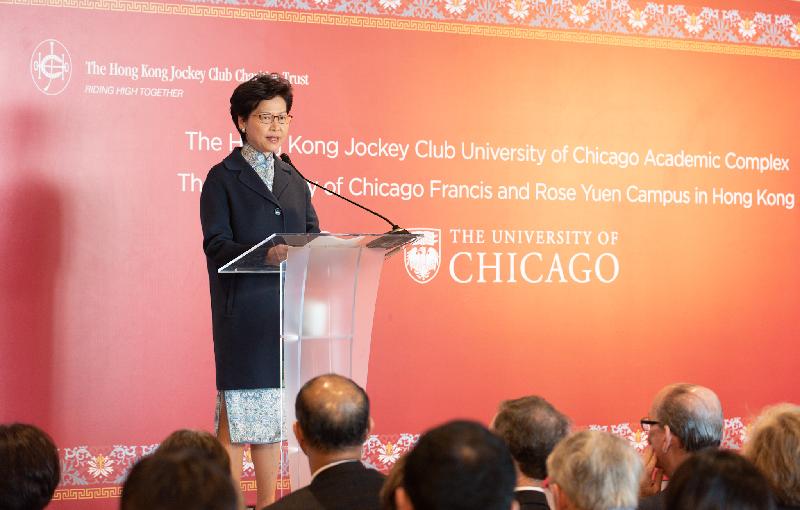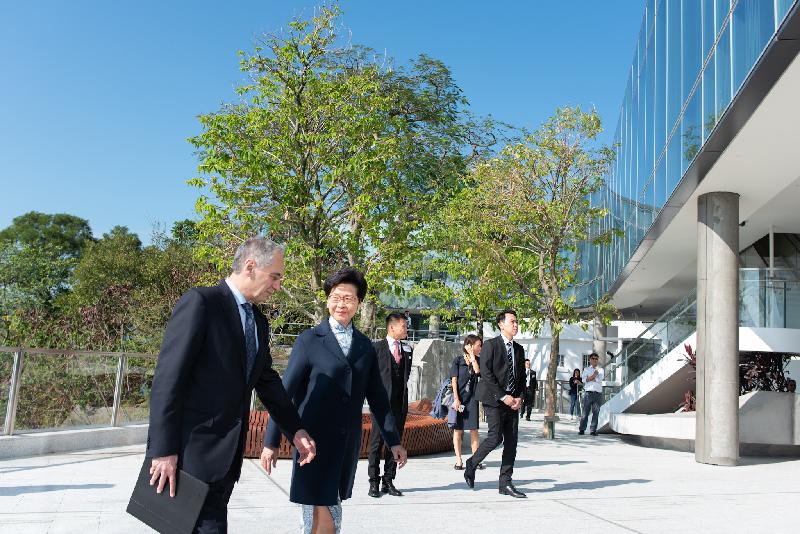Key statistics on business performance and operating characteristics of building, construction and real estate sectors in 2017
According to the results of the 2017 Annual Survey of Economic Activities – Building, Construction and Real Estate Sectors released today (November 30) by the Census and Statistics Department (C&SD), the construction sector’s total receipts (comprising gross value of construction works performed and other business receipts) amounted to $418.5 billion in 2017, representing an increase of 3.1% over 2016; on a per establishment basis, total receipts was $16.8 million in 2017, increased slightly by 0.4% compared with 2016.
Operating expenses and compensation of employees of the construction sector altogether amounted to $377.6 billion in 2017, representing an increase of 2.8% over 2016; on a per establishment basis, they were $15.2 million in 2017, edged up by 0.1% compared with 2016.
Gross surplus of the construction sector, which is equal to total receipts less operating expenses and compensation of employees, increased by 6.1% over 2016 to $40.9 billion in 2017; on a per establishment basis, gross surplus increased by 3.3% compared with 2016 to $1.6 million in 2017. Gross surplus accounted for 9.8% of total receipts in 2017, up by 0.3 of a percentage point over 2016.
Value added of the construction sector, which is a measure of its contribution to Hong Kong’s Gross Domestic Product, increased by 5.2% over 2016 to $132.8 billion in 2017; on a per establishment basis, the value added was $5.3 million in 2017, representing an increase of 2.4% over 2016.
In 2017, there were some 24 800 establishments in the construction sector, which directly engaged about 185 100 persons, or an average of 7.5 persons per establishment.
The survey did not cover labour-only sub-contractors that mainly supplied labour to work on a job-to-job basis, owing to practical consideration in data collection. The employment figures above mainly covered direct employees of the construction establishments and did not reflect the labour input through the sub-contracting activities of labour-only sub-contractors.
Apart from the construction sector, the survey also enumerated establishments engaged in real estate activities; and architectural, surveying and engineering services.
Total receipts (comprising gross margin of real estate development projects, service and rental income and other business receipts) of establishments engaged in the real estate activities (including real estate development, real estate leasing, real estate brokerage and agency and real estate maintenance management) amounted to $202.0 billion in 2017, representing an increase of 4.0% over 2016. Operating expenses and compensation of employees altogether amounted to $82.0 billion in 2017, representing an increase of 8.1% over 2016. Gross surplus increased by 0.8% compared with 2016 to $111.6 billion in 2017. Gross surplus accounted for 55.3% of total receipts in 2017, down by 1.8 percentage points compared with 2016. Value added increased by 3.6% compared with 2016 to $145.3 billion in 2017.
In 2017, the real estate activities comprised 9 100 establishments and engaged about 112 300 persons, or an average of 12.4 persons per establishment.
The total number of private real estate projects ever operated in 2017 was 299. As at end-2017, 236 projects, which were expected to provide a total 7.4 million square metres of gross floor area of buildings when completed, were still under construction. Among them, 19% were on Hong Kong Island, 30% in Kowloon and 51% in the New Territories and outlying islands.
The survey excluded establishments which developed real estate projects for their own use as well as those which owned land but had not developed it during the reference year. Real estate leasing and other related activities undertaken by individuals or firms which engaged less than two persons (except for subsidiaries of real estate enterprises) were also not covered in the survey.
Total receipts (comprising service income and other business receipts) of establishments engaged in the architectural, surveying and engineering services amounted to $22.0 billion in 2017, representing an increase of 1.4% over 2016. Operating expenses and compensation of employees altogether amounted to $19.9 billion in 2017, representing an increase of 0.5% over 2016. Gross surplus increased by 10.6% compared with 2016 to $2.1 billion in 2017. Gross surplus accounted for 9.4% of total receipts in 2017, up by 0.8 of a percentage point compared with 2016. Value added increased by 3.7% compared with 2016 to $15.7 billion in 2017.
In 2017, the architectural, surveying and engineering services comprised some 2 000 establishments and engaged about 25 700 persons, or an average of 12.8 persons per establishment.
Selected statistics for the building, construction and real estate sectors, with breakdowns by industry grouping, are shown in the attached table.
More detailed survey results on the building, construction and real estate sectors will be given in the report “Key Statistics on Business Performance and Operating Characteristics of the Building, Construction and Real Estate Sectors in 2017”. Users can download this report free of charge at the website of C&SD (www.censtatd.gov.hk/hkstat/sub/sp330.jsp?productCode=B1080011) as from end-December 2018.
For enquiries about the key statistics on business performance and operating characteristics of the building, construction and real estate sectors, please contact the Construction and Miscellaneous Services Statistics Section of the C&SD at telephone: 3903 6964 or email: building@censtatd.gov.hk. read more




